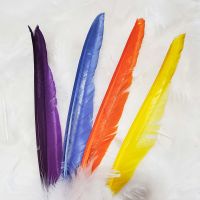
Trying to determine the origins of the feather in adornment and its meaning in the many cultures where it is found is somewhat of a daunting task.
If you can imagine a time back before gliders, drones and planes ruled the sky; feathered creatures captivated humanity as they effortlessly soared through the sky above. In just about every ancient culture, you can find the collection of feathers and their use in various types of symbolism and adornment, often to bring attention to or set one’s self apart.
In many cultures, the feather is still used today as a status symbol or ceremonial attire. To name a few, in European cultures, the feather can be found in the caps and headdresses of dignitaries. In Hawaiian and Polynesian cultures, the feather is used in the ceremonial dressage.
In modern Native American cultures, the giving and the receiving of either a bald or a golden eagle feather is a way to acknowledge or celebrate recognition for an accomplishment or performed deed that benefits the community. That feather may symbolize honor, wisdom, strength, freedom, truth or all of the above and is treated with the same respect as the American flag.
An eagle has at least five types of feathers; primary, secondary, tail, plume and body feathers, all of which are of different shapes and sizes. On reviewing old photographs of Native Americans, it appears that the most sought after feathers were the primary and secondary feathers, but you will also see the other feathers used in adornment. The feather types and placement also appear to have different symbolic meanings.